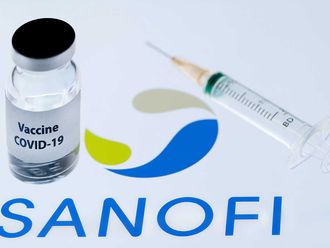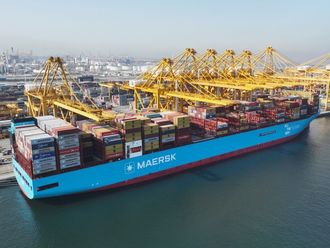Investors should be prepared for volatile share price movements in India during the coming week as speculation rises to a crescendo ahead of the forthcoming budget, which would be the first by Prime Minister Narendra Modi’s government that strode to power in May with a thumping victory in national elections.
Expectations on the budget, to be presented to parliament on July 10, are high after the business-friendly Modi promised to focus on growth by removing bottlenecks and reviving investments, all neglected by the previous administration and caused the halving of annual economic expansion to below five per cent for the past two years.
While the stock markets have rallied to a series of record highs on optimism about the new government’s leadership and ability to bolster growth, there are formidable headwinds that could spoil the party – at least in the near term.
For starters, Modi has inherited an administration whose financial health is in disarray. The slump in growth has dented government revenues while populist giveaways – a hallmark of former prime minister Manmohan Singh’s decade-long rule – have ballooned the subsidy bill, leaving a huge mismatch between income and expenditure. Poor governance not only contributed to sluggish growth but also high inflation.
“A presentation that will simultaneously be growth supportive, anti-inflationary, and committed to fiscal consolidation may well be on the market’s wish list, but that would surely be a tall order for this fledgling administration,” Deutsche Bank economists Taimur Baig and Kaushik Das wrote in a June 27 report on the coming Indian budget.
The interim budget, unveiled by former finance minister P. Chidambaram on February 28, painted a rosy picture of the financial health by some creative accounting, notably claiming a lower fiscal deficit of 4.5 per cent of GDP for 2013-14 by pushing a large chunk of the liability to the following year and setting 4.1 per cent target for 2014-15 by assuming incredibly optimistic revenue growth.
“There is a risk that last year’s numbers could be re-stated if the new government chooses to settle arrears related to various subsidies and account for it in the last year. Indeed, that would make last year’s outcome look more grounded in reality and make this year’s budget goals look more sensible on a year-on-year basis,” the Deutsche Bank report said.
Morgan Stanley calculated India’s 2013-14 fiscal deficit at 5 per cent, which it believes the new government should clarify.
“We believe the government will need to take into account the one-off measures used to window-dress the 2013-14 reported fiscal deficit and thus adjust the starting point to impart greater credibility to the 2014-15 target,” the US investment bank said.
Bitter pill
Modi, a hard-nosed politician who is credited with Gujarat’s robust growth rate even as the country’s expansion slowed sharply, has already let the cat among the pigeons with his talk that “tough measures” were on their way to nurse the economy back to health.
In a signal what could be in store, passenger rail tariffs were raised by 14.2 per cent and freight rates increased by 6.5 per cent, both ahead of the railway budget that will be presented two days before the main budget. State-controlled Indian Railways runs one of the world’s largest rail networks, but its services have been dismal due to heavily subsidised passenger tariffs and poor finances.
The higher tariff will have a one-time impact on the prices of cement, steel, coal and oil which rely heavily on the railways for transportation.
The budget is expected to roll out ambitious plans for the railways, specifically to launch bullet trains between main cities across the country and dedicated freight corridors. It could also unveil blueprints for metro rail projects and suburban networks to cater to the bustling cities with an ever expanding population.
“With the government considering more bold reforms in the sector – including attracting foreign direct investment, undertaking pubic private partnerships, and issuing bonds to attract funding – it was imperative to increase the economic viability of the rail finances that are currently bleeding, with few resources available for modernization and upgradation of infrastructure,” JP Morgan said.
“Subsidies on passenger tariffs have increased to Rs260 billion per year and the latest set of tariff hikes is expected to make a dent in that figure by garnering about Rs80 billion.”
Deutsche Bank analysts Abhay Laijawala and Abhishek Saraf said these moves should now begin to convince investors of the government’s strong resolve on addressing macro-economic imbalances and particularly fiscal consolidation through rationalization of subsidies.
“We are now even more hopeful of the government biting the bullet on subsidies in the budget,” they wrote in a report. “We believe that the government may move beyond diesel and towards LPG price rationalization and maybe even kerosene.”
State-run oil refiners Hindustan Petroleum Corp and Bharat Petroleum Corp would be key beneficiaries of expected fuel price rationalization, they said.
Divestment blues
To make up for revenue shortfalls the Modi administration is expected to aggressively push asset sales, particularly in companies where government holdings are either very large or residual. The interim budget set a 2014-15 divestment target of Rs569 billion, which at 0.44 per cent of GDP is well above the 0.2 per cent in recent years.
There is a strong likelihood of the target being exceeded thanks to upbeat market conditions and robust foreign appetite for Indian equities, including state-controlled companies that have large assets and big potential for growth.
Some of the potential candidates for divestment are Steel Authority of India Ltd, Coal India Ltd, Rural Electrification Corp, Power Finance Corp, Power Grid Corp, National Hydro-electric Power Corp, MMTC, NMDC, Rashtriya Ispat Nigam and NALCO. The government will also likely sell residual stakes in Hindustan Zinc and BALCO.
Barclays expects the budget could announce major capex projects, and steps to ease infrastructure financing, which could help support a speedier economic recovery.
“We see the potential for $1,125 billion worth of large infrastructure projects to be ordered in the next 12-18 months, based on old order pipelines. However, the order pipeline for power and industrial projects is weak in the near term, in our view. We expect all end markets to recover only in 2017-18,” the British bank said.
“We reiterate our overweight ratings on L&T, Voltas, Havells and KEC with revised price targets,” it said. “While we raise our price targets for Cummins and Crompton Greaves, we retain our equal weight ratings given their unattractive positioning in our valuation matrix.”
The writer is a journalist based in India












